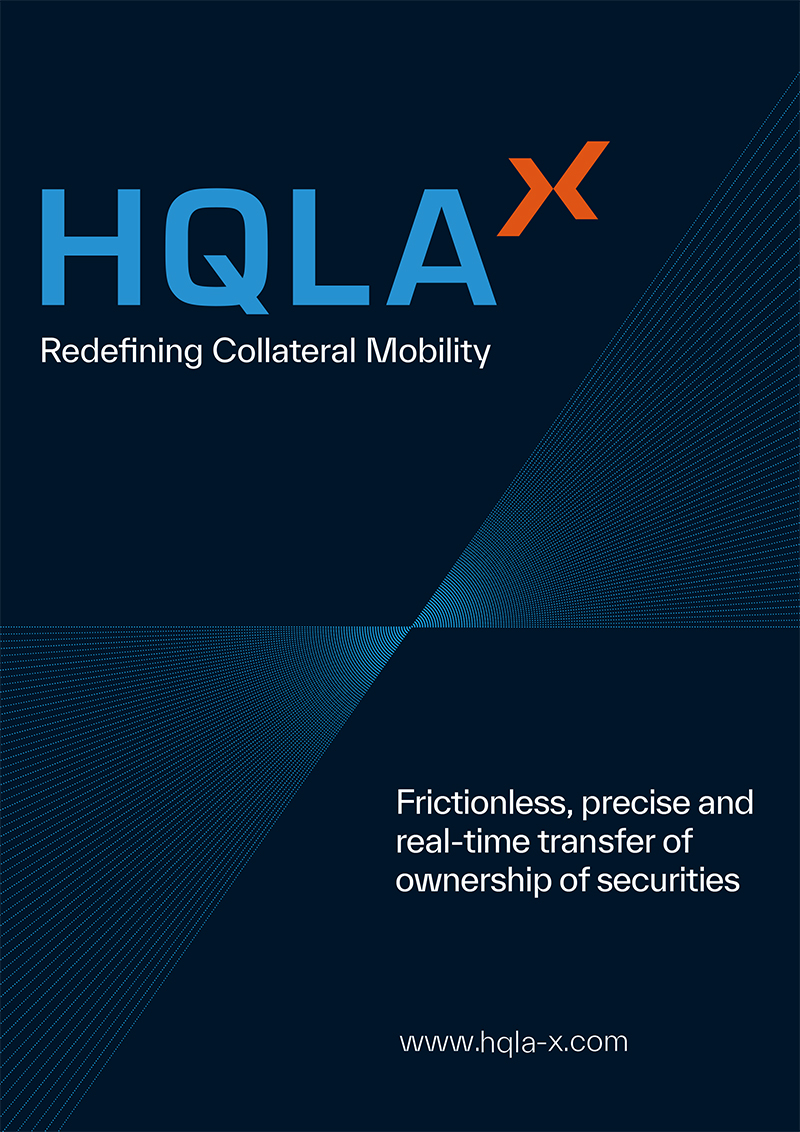Eurex
Eurex’s Frank Gast, managing director and member of the management board of Eurex Repo, and Carsten Hiller, head of Central Europe funding and financing, fixed income sales, discuss the past, present and possible future of Eurex’s GC Pooling product
GC Pooling was launched in 2005 and quickly developed into a highly liquid market for collateralised financing in EUR, USD, CHF and GBP, according to Eurex. Its participants benefited from anonymous electronic trading via a central counterparty (CCP) with a real-time collateral management system.
After GC Pooling took a back seat in recent years, due to funding provided by the European Central Bank (ECB), recent and upcoming market developments indicate that the need for market-driven funding will once again increase. The Eurex GC Pooling product is an effective and efficient tool to address rising liquidity needs for treasury desks on both the sell and buy side.
How was the GC Pooling product received by the industry after its launch and throughout key financial events?
Frank Gast: After its launch in 2005, GC Pooling was initially used by the German securities financing and money market community. This quickly changed with the financial crisis following the default of Lehman Brothers in 2008, when the unsecured money market dried up and credit lines in the interbank market were massively reduced. In addition, treasury and money market managers appreciated the possibility to reuse collateral received in a reverse repo for other GC Pooling repo transactions and margin requirements at Eurex Clearing for repos and derivatives, as well as to collateralise central bank exposures.
The automated allocation of collateral to predefined, standardised baskets of liquid assets and Clearstream’s integrated collateral management system proved to be a reliable and robust tool in these turbulent times. In March 2020, with the outbreak of the Coronavirus pandemic, GC Pooling proved to be right for short-term cash management. While some participants were able to close longer-term transactions to secure long-term funding, others rolled over huge liquidity balances in euro on a daily basis.
How has monetary policy from the ECB impacted the performance of GC Pooling?
Carsten Hiller: After peaking in June 2014 with a record volume of €203.7 billion outstanding daily volume, GC Pooling volumes came under pressure from the ECB’s interest rate cuts and the start of quantitative easing, while excess liquidity steadily increased. The central bank became the “lender of first resort”, which almost obliterated all money market activity. The phenomenon accelerated when the ECB introduced supportive measures during the Coronavirus pandemic with the targeted longer-term refinancing operation (TLTRO) III.4 and a record allocation of €1.3 trillion in June 2020.
Excess liquidity reached a record high of €4.5 trillion, pushing short-term money market and GC Pooling rates below the deposit facility rate of -0.50 per cent. However, even though volume levels have been low over recent years, the tool has demonstrated its power in situations with increasing liquidity needs. Activity picked up very quickly in March 2020 and demonstrated its power as a reliable liquidity management tool.
How has the GC Pooling market developed since the Covid-19 pandemic began?
Hiller: We saw an increase in GC Pooling forwards in Q4 2021, which was due to year-end cover activities. However, volumes remained at a low level for short maturities such as overnight or one-week. Term business continued to increase significantly as the ECB’s wording hinted at possible interest rate hikes later in the year, and signs gathered that inflation was no longer temporary. In 12-month maturities in particular, we recorded brisk business with various customers due to the steeper yield curve. It is encouraging that several customers, who have not actively used GC Pooling in recent years due to ECB policies, have returned to the GC Pooling market in recent months, even for short-term maturities such as overnight. It looks like more and more customers are preparing for the big revival of GC Pooling.
With the increasing participation of public institutions and pension funds in the GC Pooling market, this diversification of active participation can only strengthen Eurex’s position as the leading European secured funding market infrastructure.
What is now fuelling the comeback of GC Pooling and how does Eurex see GC Pooling developing further?
Gast: As interest rates continue to rise in the Eurozone and more collateral will return to the market with the end of quantitative easing, it will become increasingly important for banks to be prepared and have all relevant collateralised financing and money market instruments available. For GC Pooling and short-term GC repo, it still depends on how quickly the excess liquidity is reduced. This would likely push short-term rates towards the deposit rate. Once short-term GC Pooling rates start trading at a premium to the ECB Deposit rate, we expect to see a significant increase in GC Pooling volumes and an increasing number of our more than 160 customers across Europe re-engaging in this market.
In fact, GC Pooling trading activities have seen a significant increase in dynamic since the ECB announcement of increasing interest rates and reduction of excess liquidity in summer 2002. Many formerly inactive clients have come back to marketplace, supranationals and debt management offices (DMOs) to act as cash providers as well as others looking for long term financing. Overall, we are seeing a significant increase in daily traded volumes in GC Pooling have increased by more than 300 per cent compared to the same period in 2022. GC Pooling levels are recently getting close to deposit rate levels and, with TLTRO repayments due in June 2023, we expect this trend to continue.
Even though the migration of GC Pooling to Clearstream’s Xmac infrastructure has had some challenges after migration in October 2022, we see all active clients adapting to the new TARGET2 (T2) and TARGET2-Securities (T2S) environment with settlement efficiency of 99.9 per cent. The migration to the European Collateral Management System (ECMS) in 2024 will be another important milestone to move into a more harmonised and more efficient European collateral management infrastructure.
Since funding needs and requirements are highly likely to increase, Eurex stands ready with its tried and tested tool set to meet the challenges expected to arise. We are increasing buy-side activities and have a strong pipeline for onboarding both sell- and buy-side firms. Our objective is to help educate the industry to cope in a positive interest rate environment with fixed income products, with many new junior traders at the desks recently hired and only used to negative interest rate environment for the past few years.


